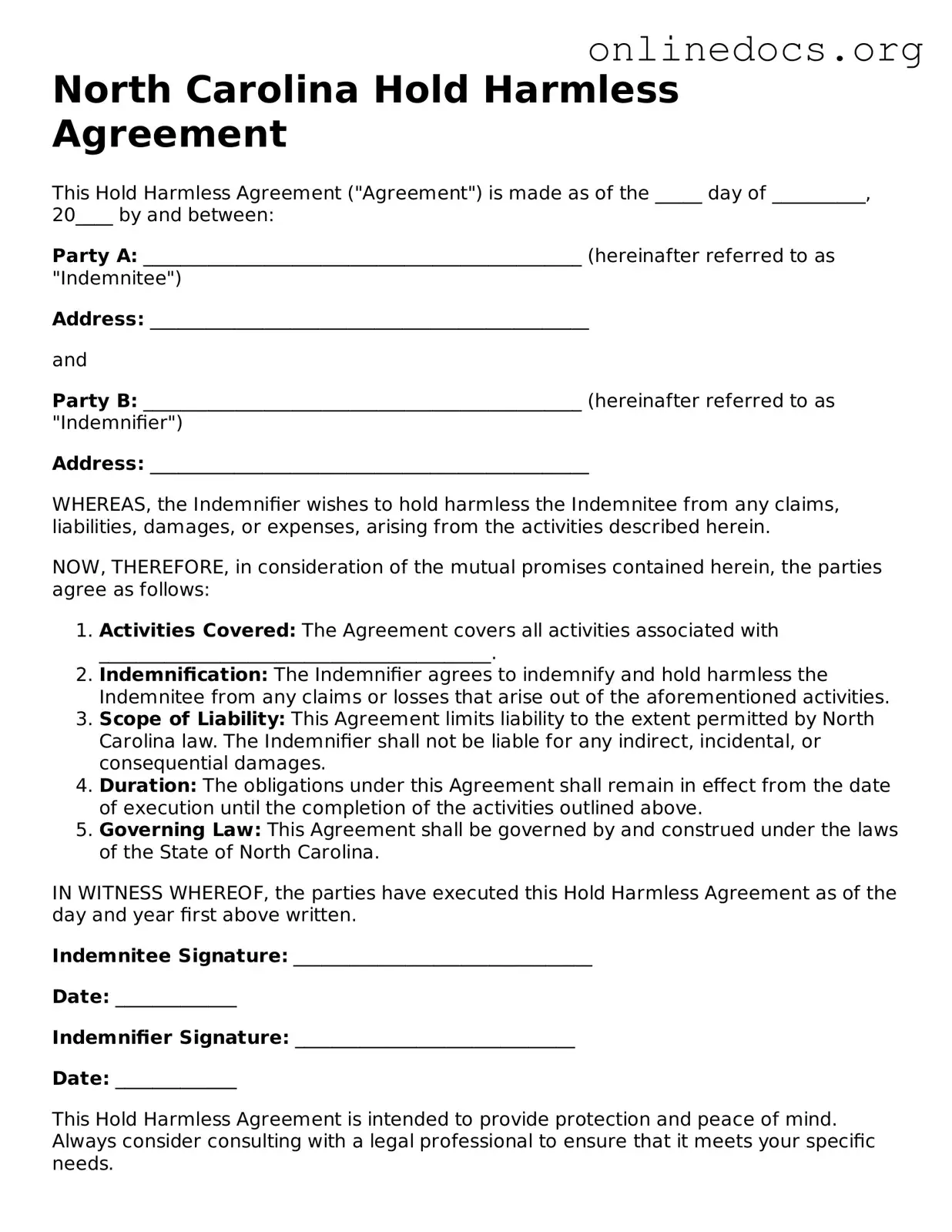Filling out a Hold Harmless Agreement in North Carolina is a critical task that requires attention to detail. Many individuals make mistakes that can undermine the effectiveness of the agreement. One common error is failing to read the entire document thoroughly. Skimming through the text may lead to misunderstandings about the terms and conditions, which can have serious implications later on.
Another frequent mistake is neglecting to provide accurate information. Whether it’s the names of the parties involved or specific dates, inaccuracies can create legal loopholes. It is essential to double-check all entries to ensure that the information is correct and complete.
People often overlook the importance of signatures. An unsigned agreement is not legally binding. Therefore, it’s crucial to ensure that all parties involved have signed the document. Additionally, some may forget to include the date next to their signatures, which can lead to confusion about when the agreement was executed.
Many individuals also fail to specify the scope of the agreement clearly. A vague description can lead to misunderstandings about what is covered. It’s vital to articulate the responsibilities and liabilities in precise terms to avoid potential disputes in the future.
Another mistake involves not considering the state laws that apply. Each state may have different requirements for Hold Harmless Agreements. Ignoring these can result in an unenforceable document. It is advisable to familiarize oneself with North Carolina’s specific regulations before finalizing the agreement.
Some people forget to seek legal advice. While it may seem straightforward, the implications of a Hold Harmless Agreement can be significant. Consulting with a legal expert can provide clarity and ensure that the document meets all necessary legal standards.
Additionally, individuals often neglect to keep a copy of the signed agreement. Without a copy, it becomes challenging to reference the terms if a dispute arises. Always retain a signed version for personal records to safeguard your interests.
Finally, failing to review the agreement periodically can be a costly oversight. Situations change, and so may the terms of the agreement. Regularly revisiting the document ensures that it remains relevant and effective in protecting the parties involved.
